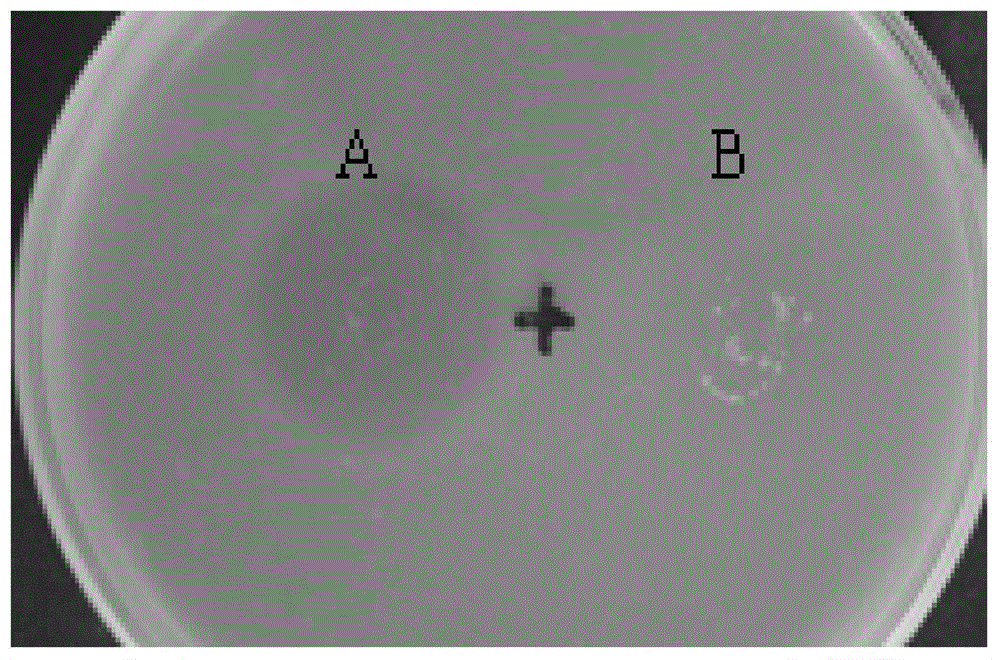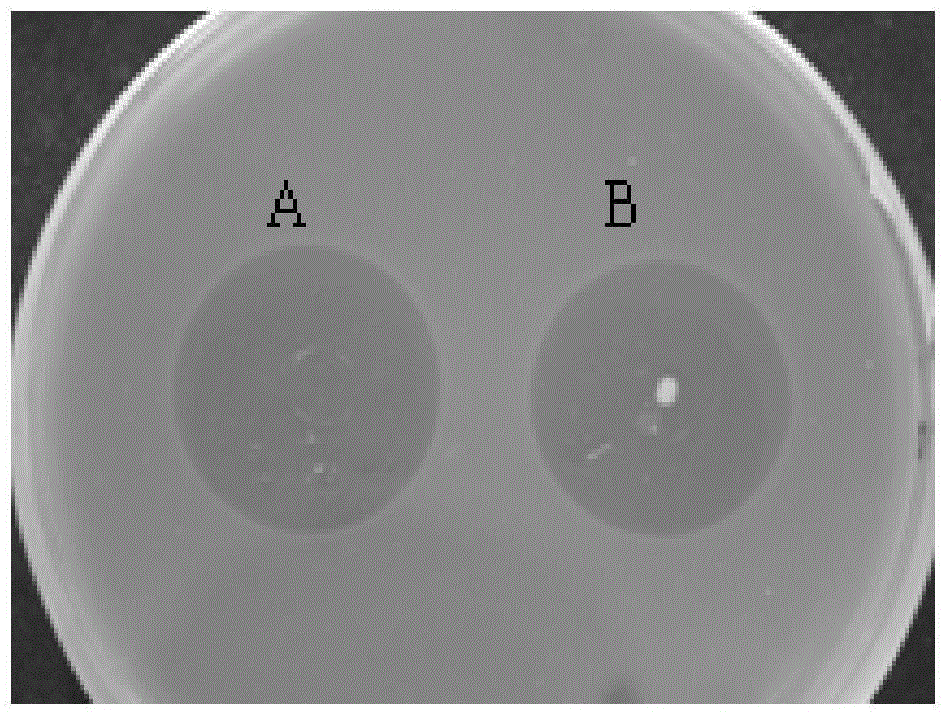Recombinant lactobacillus plantarum capable of secreting colicins V and preparation method thereof
A technology of colibactin and Lactobacillus plantarum, applied in the field of microbial molecular biology, can solve problems such as animal intestinal flora imbalance, threats to the breeding industry and feed industry, and bacterial resistance to superinfection
- Summary
- Abstract
- Description
- Claims
- Application Information
AI Technical Summary
Problems solved by technology
Method used
Image
Examples
Embodiment 1
[0034] Embodiment 1 carries the construction of the lactic acid bacteria expression vector of fusion gene fragment
[0035]The sequences were obtained from GenBank: the sequences of the pediocin guide peptide gene and the mature colibactin V gene, after codon modification and optimization, the pediocin guide peptide gene sequence of the present invention is shown in SEQ ID NO. The bacteriocin V gene sequence is shown in SEQ ID NO.3. The pediocin guide peptide gene and the mature colicin V gene are connected, and the fusion gene after the connection is synthesized by the biological company as follows, a total of 338bp, as shown in SEQ ID NO.1 (Nco I and Eco R I are added at both ends respectively. Enzyme cleavage sites and protected bases) synthetic fragments were constructed on the pUCK vector. The expression vector p118148 and the pUCK vector carrying the synthetic fragment were double digested with Nco I and Eco R I, respectively, and then ligated overnight with DNA ligase....
Embodiment 2
[0036] Example 2 Construction of recombinant Lactobacillus plantarum strains
[0037] 1. Preparation of Lactococcus lactis NZ9000 competent cells
[0038] Lactococcus lactis NZ9000 was cultured in SGM17 liquid medium at 30°C until the OD value reached 0.2-0.7. Take 10ml of bacterial liquid, centrifuge at 6000rpm for 8min at 4°C to collect the cells; add 2ml of pre-cooled 0.5mol / L sucrose solution (containing 10% glycerol) to wash twice, centrifuge at 6000rpm for 8min at 4°C, and discard the supernatant; The cells were suspended with 1% pre-cooled 0.5mol / L sucrose solution (containing 10% glycerol) corresponding to the volume of the cell culture medium, and 40 μl was dispensed for use.
[0039] 2. Electrotransformation of recombinant plasmids to Lactococcus lactis NZ9000
[0040] Take 40 μl of Lactococcus lactis NZ9000 competent cells, mix it with 5 μl of the ligation product obtained in Example 1, transfer it to a 2mm electroporation cup, use Bio-Rad Gene Pulser Xcell TM Ty...
Embodiment 3
[0045] Embodiment 3 The activity detection method of recombinant Lactobacillus plantarum producing colicin V of the present invention
[0046] The recombinant Lactobacillus plantarum prepared in Example 2 and the control strain (strain obtained by electrotransformation of p118148) were cultured in MRS liquid medium for 48 hours, 6000 rpm, centrifuged at 4°C, and the supernatant was taken. After adjusting the pH of the supernatant to 7.0, the supernatant was concentrated to 100 times by TCA method. Using Escherichia coli DH5α and Listeria monocytogenes (ATCC54003) as indicator bacteria, the indicator bacteria were cultured to the early logarithmic phase, and 100 μl was added to 10 ml of solid medium (Listeria Bacteria is TYPE medium; Escherichia coli is LB medium), poured into a plate after mixing evenly, and put an Oxford cup on the medium after cooling and solidification. Add 100 μl of the supernatant of the concentrated recombinant strain and the control strain to the Oxfor...
PUM
 Login to View More
Login to View More Abstract
Description
Claims
Application Information
 Login to View More
Login to View More - R&D
- Intellectual Property
- Life Sciences
- Materials
- Tech Scout
- Unparalleled Data Quality
- Higher Quality Content
- 60% Fewer Hallucinations
Browse by: Latest US Patents, China's latest patents, Technical Efficacy Thesaurus, Application Domain, Technology Topic, Popular Technical Reports.
© 2025 PatSnap. All rights reserved.Legal|Privacy policy|Modern Slavery Act Transparency Statement|Sitemap|About US| Contact US: help@patsnap.com



